Macho fern and Boston fern are difficult to tell apart because their differences are very subtle. They are both ferns belonging to the Nephrolepis genus so their traits are also very similar.
Despite their subtle differences, both Macho and Boston ferns are excellent choices for indoor or outdoor decoration, bringing a touch of natural elegance to any space. If you want some help to tell them apart, we’re here to help. Read on to find out more!
Macho Fern vs Boston fern
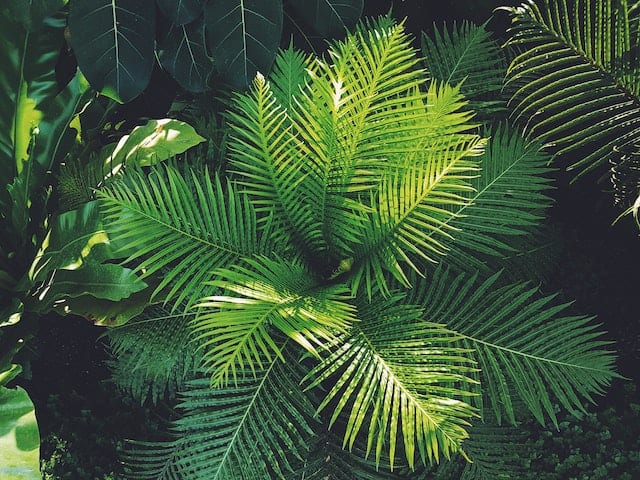
Although it is easy to confuse macho Fern and Boston fern, they have some visible differences. Macho ferns leaves are longer with brighter colors while Boston fern leaves are smaller with less vibrant colors.
Macho ferns are taller than Boston ferns with a frond length of up to 6ft compared to Boston fern fronds that reach only 3ft.
Still, both plants are very similar since they both have yellow stems and are non-flowing plants. To compare these two plants better, take a look at this table.
More plants comparison:
Comparison
| Macho Fern | Boston Fern | |
| Leaf color | Bright green | Blue-green |
| Stem color | Yellow | Yellow |
| Variegation | Yes | Yes |
| Flower | Non-flowering | Non-flowering |
Macho Fern vs Boston Fern Differences
It is hard to tell macho and Boston ferns during the early stages of growth. However, some distinguishing features begin to appear, as the plants grow older. There is a difference in shape, appearance, color, leaf structure, and size of both plants since macho ferns grow and mature much faster than Boston ferns.
There are also many other differences between the two plants so let’s go over them in detail.
1. Origin and Name
Macho fern is a tropical plant that originates from the US state of Florida. Macho fern is botanically called Nephrolepsis biseratta, but it is commonly known as the broad sword fern or giant sword fern.
The Boston fern, Nephrolepis exaltata, hails from West Indies, Mexico, Africa, and Polynesia. It also grows well in Florida and Central America since it’s a cousin to the macho fern. Boston ferns are called sword ferns.
2. Taxonomy
Macho and Boston’s ferns are different species of the genus Nephrolepis. They are different species on the same taxonomy tree. However, Boston ferns are sometimes treated as a species part of the Davalliaceae family.
3. Shape and Appearance
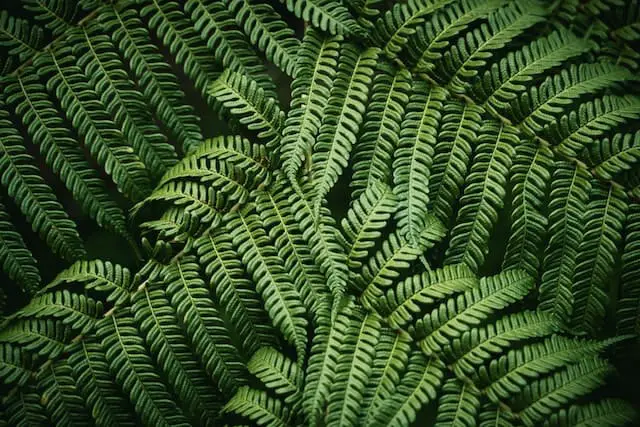
Macho and Boston ferns’ main difference is in the shape and appearance of their leaves. Macho fern has large and stately fronds. Their leaves are longer and sword-shaped but make sure to not confuse these ferns with weeds!
Boston fern leaves are longer with semi-oval ends, making the plant seem exalted or elevated, hence the name Exaltata. Boston ferns are shorter with smaller fronds and appear paler in color.
4. Differences in Color
Macho ferns have larger, bold, bright green leaves. Whereas Boston ferns have tiny leaflets that can have a blueish tint to their green leaves. Boston fern leaves become darker as they mature.
5. Leaf Size and Texture
Both macho and Boston ferns have long sword-like leaves that hang downwards. The leaves have a rounded and wispy shape, giving them a soft appearance. These are ideal for the tropical climate and make great houseplants.
There is a slight difference in the size and texture of the Boston fern as it has dense but tiny leaves with a coarse texture. Macho fern leaves have a much smoother texture.
6. Height and Growth Rate
Macho ferns grow taller and wider than Boston ferns. The plant can grow up to 3-4 feet in height and a width of up to 7 feet. Boston ferns are dwarfs and grow to a height of 2-3 feet and a width of 3 feet.
Macho ferns are more aggressive in their growth and reach maturity much faster than Boston leaves. Macho ferns reach maturity in two years whereas it takes four years for Boston ferns to mature.
7. Flowers
The beauty of macho and Boston Ferns is in their leaf sizes, color, and texture. These plants do not flower since they reproduce through spores and rhizomes but they still have roots and stems like flowering plants. Macho ferns produce spores before Boston ferns since they mature much faster.
8. Growing Conditions, Temperatures, and Climate
Macho ferns grow all year round in the USDA zones and flourish in partial sun and some shade with warm and humid conditions. Boston ferns grow well in humid subtropical zones 10 to 12 and require partial sun not to scorch the leaves. Both plants can survive in 50°F to 80°F temperatures.
If you want to grow these plants as houseplants, macho ferns prefer to be raised on a balcony since they’re much bigger and grow much faster.
9. Light, Water, Soil
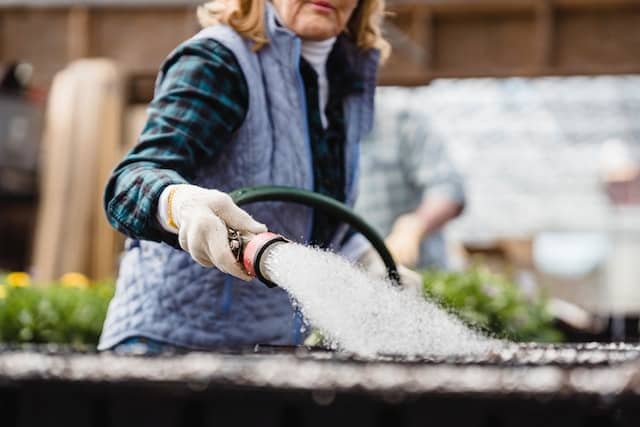
Boston ferns do well in indirect light. If you are growing the plant indoors, expose it only to the morning sun to prevent burning the leaves. The soil should be well-drained loamy, with rich nutrients.
You’ll need to water it daily if you plan to grow it outdoors. Macho fern can do well in partial light and slightly acidic loamy soil. Ensure the soil is moist and not wet.
Macho Fern vs Boston fern Similarities
While there are a few differences between macho and Boston ferns, these plants are similar. Both of them require similar temperatures, sunlight, natural habitat, and humidity conditions.
1. Sunlight
Macho and Boston ferns do well in semi-bright places with plenty of indirect sunlight. Direct sunlight can burn the leaves and kill your plant if exposed for too long.
2. Watering
Both plants require frequent watering if grown in dry areas. For example, you can water them once every day in dry climates. Avoid overwatering because it can lead to root rot or other fungal diseases.
If you grow these ferns in pots, ensure that the soil is not waterlogged. During winter, always wait for the top layer of the soil to dry before watering the plants again.
3. Humidity and Temperature
Boston and macho ferns thrive well in warm climates with high humidity levels. You can grow them anywhere as long as the temperature is above 59°F. Low temperatures can cause the fern leaves to dry.
You can use a humidifier during winter to regulate the humidity level for your ferns. Inadequate humidity can result in the yellowing of leaves.
4. Potting and Soil
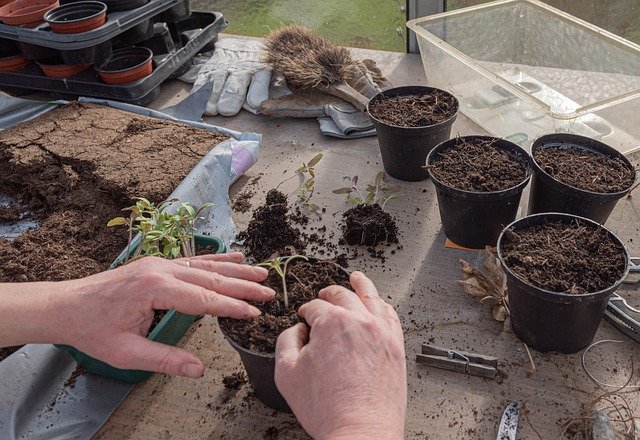
You can plant macho and Boston ferns in pots or the garden. If you’re growing them in a pot, ensure that the soil is well-drained with overflow holes. This will prevent waterlogging that causes root rots. The soil should be loamy and rich in nutrients with a slightly acidic pH.
5. Fertilizer
Fertilizer is essential for the growth of young macho and Boston Ferns. They need a balanced, all-purpose fertilizer once every six weeks during spring and summer. However, once the plants mature, they don’t need to be fertilized as often.
6. Natural Habitat
Boston fern is a tropical specie common in wetlands and humid forests. These plants are mainly found in South and Central America and Africa. Macho ferns are initially from Florida, Hawaii, and the Virgin Islands, primarily growing in swampy and wet rainforests.
Despite the difference in original locations, both of these ferns are tropical plants and can grow easily in other tropical environments.
Common Problems for Boston and Macho Ferns
Most plants face some problems if not well cared for. It could be overwatering, inadequate sunlight, pests, or diseases. These problems might affect the leaves, stems, or entire plant.
Some of the most common Boston and macho fern problems are yellow leaves, dropping leaves, and mite infestations. Here’s how you can fix them.
Yellow Leaves
Yellowing of leaves is a common problem in plants caused by overwatering or insufficiently aerated soil. Yellowing of Boston and macho ferns can cause the plants’ death if left untreated.
Make sure the soil is well aerated and avoid overwatering the plant to prevent the yellowing of leaves. However, if your fern is already experiencing yellow leaves, it is recommended to repot it and place it in a humid environment.
Dropping Leaves with Brown Tips
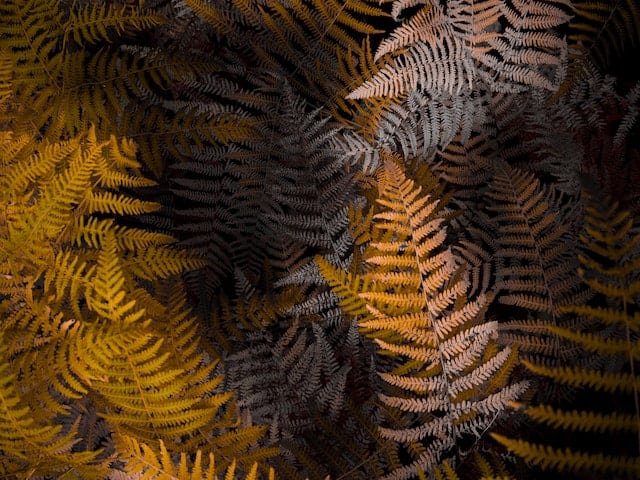
Boston and macho ferns’ leaves can wilt with brown tips due to poor soil, lack of water, insufficient humidity, excess salt, or inadequate drainage. Before growing the plants in pots, make drainage holes in the containers for excess moisture to drain.
You should also fertilize your young plants once every six months and use aerated soil. Place your plant in an environment that mimics the humidity of the tropics to avoid dropping leaves.
Limping Stems
Limping stems is another common problem in ferns. It is caused by dry soil. The damage could extend to the leaves which will start wrinkling and turn brown.
To prevent limping stems, check the top layer of the soil every day and water the plant whenever the top layer is dry. You should also use humidifiers to maintain the correct humidity levels.
Outro
Macho and Boston Ferns are common fern plants grown indoors and outdoors. These plants look similar because they belong to the same genus and family.
They grow in similar climatic conditions and temperatures and suffer common problems. Still, they’re both unique in their own ways and are excellent choices for your home should you want one.
Frequently Asked Questions
Are Macho Ferns Hardy?
Macho ferns grow in tropical zones 9-10. They do well in warm temperatures, and a bit of direct sunlight doesn’t affect them too much. Macho ferns can survive in temperatures ranging between 50°F to 80°F.
What Is Macho Fern?
Macho fern is a popular houseplant with burly foliage and pointy bright green spines. Its scientific name is Nephrolepis biserrata, and it belongs to the same genus as the Boston fern. Homeowners grow the plant to decorate patios, shaded gardens, and indoor rooms.
How Do You Care For Macho Fern?
Fertilize your macho fern every six weeks until the plant matures. After maturity, you only need to fertilize it once a year. Water the plant daily but don’t overwater it.
Overwatering can cause the yellowing of leaves and leaving your macho fern dry for too long will kill it. If your house does not have enough humidity, use a humidifier to make the conditions optimum.

Hey, I’m Lisa and I’ve been an avid gardener for over 30 years. I love writing, talking and living in the garden! Feel free to connect with me on my socials below

